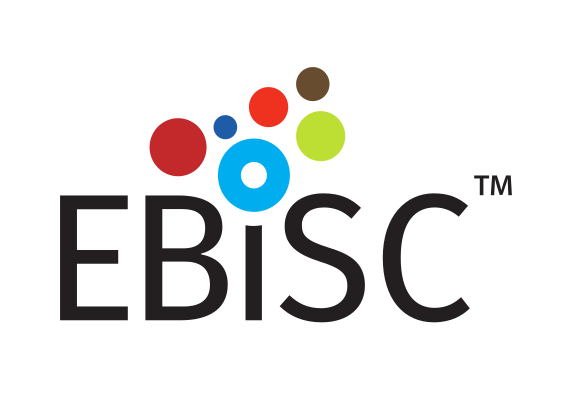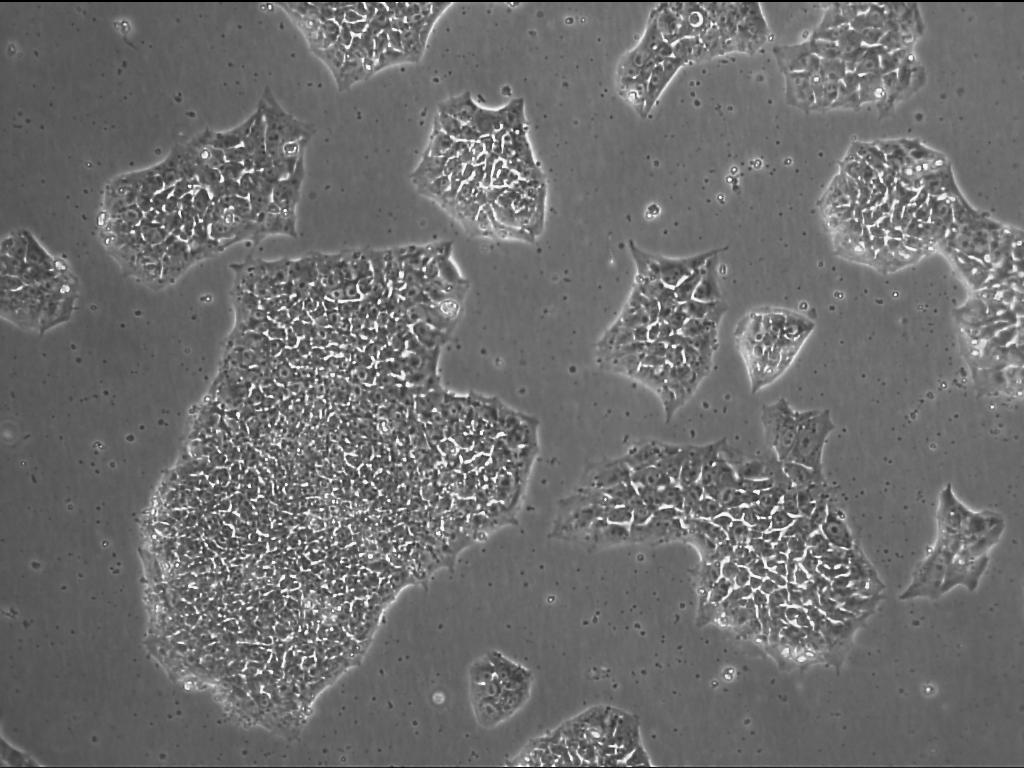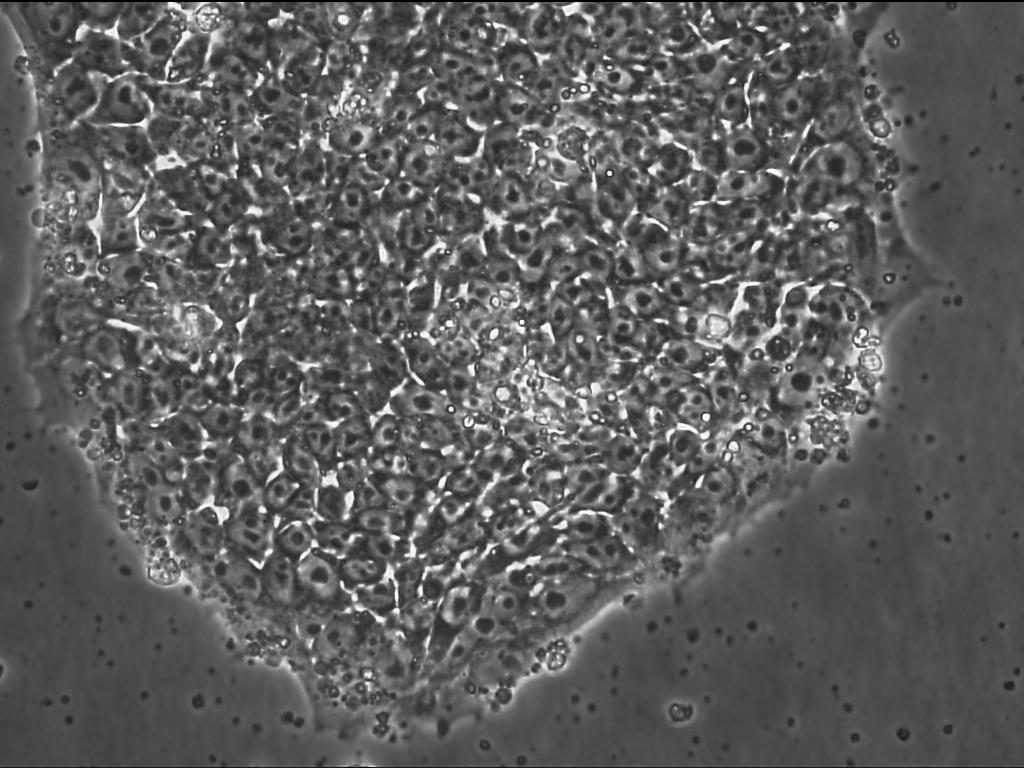If the cells you would like to access are currently listed as unavailable or
you would like information on local partners in USA, Australia, New Zealand or Japan who can support order and delivery,
please get in touch via
Contact@EBiSC.org.
UKKi008-A
NP0016-3
iPSC line
A CLIP contains information about a cell line including any
specific third party obligations relating to, for example,
licensing obligations or the donor consent which affect the
use of the cell line.
The EBiSC Access and Use Agreement must be completed along with an individual
Cell Line Information Pack for each line. Complete the EAUA and send to Contact@EBiSC.org
for countersignature. The EAUA must be fully signed before proceeding with your order.
A batch specific Certificate of Analysis will be available to
download once you receive your EBiSC iPSC line.
General#
Cell Line |
|
| hPSCreg name | UKKi008-A |
| Alternative name(s) |
NP0016-3
|
| Cell line type | Human induced pluripotent stem cell (hiPSC) |
| Similar lines |
UKKi034-C (NP0079-C, NP0079-16H) Donor's gene variants: KCNQ1, KCNQ1 Donor diseases: Congenital long QT syndrome UKKi034-A (NP0079-A, NP0079-7B) Donor's gene variants: KCNQ1, KCNQ1 Donor diseases: Congenital long QT syndrome UKKi034-B (NP0079-B, NP0079-15B) Donor's gene variants: KCNQ1, KCNQ1 Donor diseases: Congenital long QT syndrome |
| Notes | Please note that publication Pubmed ID: 24349418 only describes relevant patient characteristics, UKKi008-A is not included in the iPSC lines published. |
Provider |
|
| Depositor | Klinikum der Universität zu Köln (UKK) |
| Owner | Institute for Neurophysiology, Medical Faculty |
| Distributors |
EBiSC
Institute for Neurophysiology, Medical Faculty
Scottish Centre for Regenerative Medicine
|
External Databases |
|
| hPSCreg | UKKi008-A |
| BioSamples | SAMEA4583697 |
| Cellosaurus | CVCL_9S60 |
| Wikidata | Q54990425 |
General Information |
|
| Publications | |
| This EBiSC line can be used for: |
Yes
Research use: allowed
Clinical use: no
Commercial use: no
|
Donor Information#
General Donor Information |
|
| Sex | male |
| Age of donor (at collection) | 30-34 |
| Ethnicity | Caucasian, German |
Phenotype and Disease related information (Donor) |
|
| Diseases | A disease was diagnosed.
|
| Disease associated phenotypes |
|
| Family history | Not known |
| Is the medical history available upon request? | Yes |
| Is clinical information available? | Medication information available |
External Databases (Donor) |
|
| BioSamples | SAMEA4583720 |
hIPSC Derivation#
General |
|
| Source cell type |
A connective tissue cell which secretes an extracellular matrix rich in collagen and other macromolecules. Flattened and irregular in outline with branching processes; appear fusiform or spindle-shaped.; These cells may be vimentin-positive, fibronectin-positive, fsp1-positive, MMP-1-positive, collagen I-positive, collagen III-positive, and alpha-SMA-negative.
|
| Source cell origin |
Any portion of the organ that covers that body and consists of a layer of epidermis and a layer of dermis.
Synonyms
|
| Age of donor (at collection) | 30-34 |
| Collected in | 2009 |
| Passage number reprogrammed | P3 |
Reprogramming method |
|
| Vector type | Integrating |
| Vector | Transposon (Sleeping beauty) |
| Genes | |
| Is the used vector excisable? |
Yes |
| Absence of reprogramming vector(s)? |
Yes |
| Reprogramming vectors silenced? |
Yes |
| Methods used |
PCR
|
| Files and images showing reprogramming vector expressed or silenced | |
Vector free reprogramming |
|
| Type of used vector free reprogramming factor(s) |
miRNA
|
Other |
|
| Selection criteria for clones | human ESC morphology |
| Derived under xeno-free conditions |
No |
| Derived under GMP? |
No |
| Available as clinical grade? |
No |
Culture Conditions#
Latest released batch |
|
| Culture medium | Essential E8 |
| Passage method | EDTA |
| Surface coating | Vitronectin |
| O2 concentration | 21 |
| CO2 concentration | 5 |
| Temperature | 37 |
The following are the depositor culture conditions, they do not refer to any specific batch.
| Surface coating | Vitronectin |
| Feeder cells |
No |
| Passage method |
Enzyme-free cell dissociation
EDTA
|
| O2 Concentration | 20 % |
| CO2 Concentration | 5 % |
| Medium |
Essential 8™
|
Characterisation#
Analysis of Undifferentiated Cells
| Marker | Expressed | Immunostaining | RT-PCR | Flow Cytometry | Enzymatic Assay | Expression Profiles |
| NANOG |
Yes |
|
|
|||
| POU5F1 (OCT-4) |
Yes |
|
|
|||
| SSEA-4 |
Yes |
|
|
|||
| TRA 1-80 |
Yes |
|
|
Differentiation Potency
In vitro spontaneous differentiation
| Marker | Expressed |
| SOX17 |
No |
| FOXA2 |
No |
| GSC |
Yes |
| GATA6 |
No |
| CXCR4 |
Yes |
| PITX1 |
Yes |
In vitro spontaneous differentiation
| Marker | Expressed |
| HAND1 |
Yes |
| VIMENTIN |
Yes |
| BMP4 |
Yes |
| GATA4 |
Yes |
| DCN |
Yes |
| PECAM1 (CD31) |
Yes |
| PDGF |
No |
In vitro spontaneous differentiation
| Marker | Expressed |
| PAX6 |
Yes |
| Sox1 |
Yes |
| B-TUBULIN |
No |
| NEUROD1 |
Yes |
| HES5 |
Yes |
| FOXG1 |
Yes |
Microbiology / Virus Screening |
|
| HIV 1 | Negative |
| HIV 2 | Negative |
| Hepatitis B | Negative |
| Hepatitis C | Negative |
| Mycoplasma | Negative |
Sterility |
|
| Inoculation for microbiological growth | No Contaminants Detected |
| Mycoplasma | Not Detected |
| Viability | Viable post-cryopreservation |
Genotyping#
Karyotyping (Cell Line) |
|
| Has the cell line karyotype been analysed? |
Yes
Normal male chromosome complement and banding pattern.
Passage number: P21
Karyotyping method:
G-Banding
|
Other Genotyping (Cell Line) |
|
| Is there genome-wide genotyping or functional data available? |
Yes
Molecular karyotyping using OmniExpress Exome Chip
|


